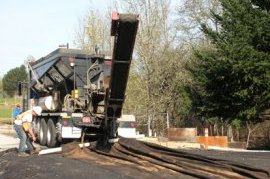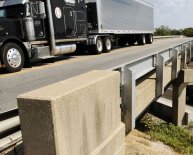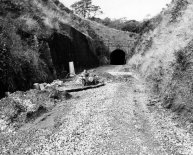
Asphalt in road construction
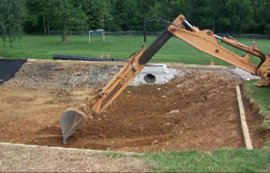 Constructing porous asphalt pavements is straightforward. Any qualified asphalt pavement contractor can construct such pavements and virtually any asphalt plant can produce the material. No certification is required.
Constructing porous asphalt pavements is straightforward. Any qualified asphalt pavement contractor can construct such pavements and virtually any asphalt plant can produce the material. No certification is required.
Successful construction starts from the ground up – literally. Care must be taken to not compact the subgrade during excavation and construction, as excessive compaction would reduce infiltration. Using backhoes and positioning the equipment alongside the recharge bed is one technique that can be used.
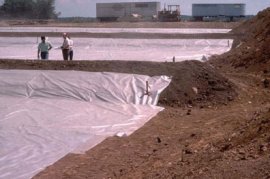 Photo courtesy of CH2M HILL
Photo courtesy of CH2M HILL
Where this is not feasible, excavate using equipment with tracks or over-sized tires. Narrow rubber tires should be avoided. The site area for the porous pavement should also be protected from other heavy equipment running on the subgrade.
As soon as the bed has been excavated to the final grade, place the filter fabric. Overlap the filter fabric a minimum of 16 inches. It should extend at least four feet outside of the bed.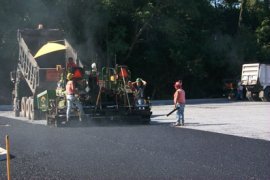 This excess fabric will be folded over the stone bed to temporarily protect it from sediment until the porous asphalt surface is placed.
This excess fabric will be folded over the stone bed to temporarily protect it from sediment until the porous asphalt surface is placed.
Photo courtesy of CH2M HILL
Install drainage pipes if required.
Place aggregate for the stone recharge bed, taking care not to damage the filter fabric. Aggregate should be dumped at the edge of the bed and placed in layers of 8 to 12 inches using track equipment.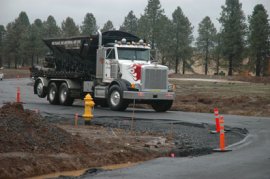 Compact each lift with a single pass of a light steel wheel roller.
Compact each lift with a single pass of a light steel wheel roller.
The porous asphalt layer is placed in 2- to 4-inch-thick lifts using track pavers, following state or national guidelines for the construction of open-graded asphalt mixes.
Compact the asphalt with two to four passes of a ten-ton static roller. Normally, only a few passes are necessary. In many cases it will be necessary to let the mix cool before beginning compaction. Additional passes with a lighter roller may be required to remove roller marks at the surface; these are best done after the mix has cooled substantially. After final rolling, traffic should be restricted for the first 24 hours, as the pavement may be more tender during this time.
It is critical to protect the porous pavement during and after construction from sediment-laden water and construction debris that may clog it.
